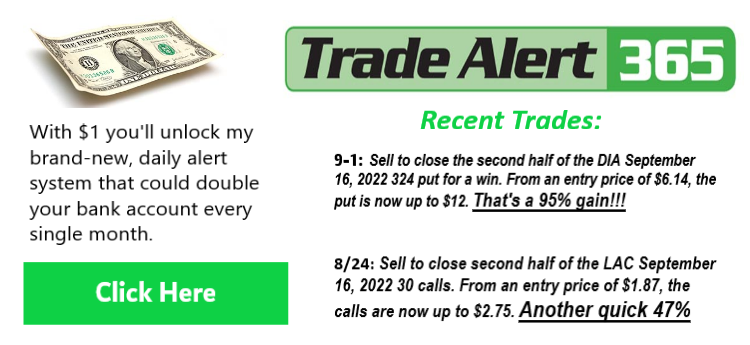by Don Wellenreiter
A basic approach to futures trading is to either buy off of support lines or sell off of resistance lines. This is especially true in a non-trending market.
A support line is an area where the market has traded down to previously, held at that level and then bounced higher. A resistance line is an area above the current market price where the market has encountered enough selling to stop its advancement and sometimes reverse course.
A break through these trend-lines can very often lead to a sizable move, as either the longs begin liquidating (if support is broken) or the shorts begin buying (if resistance is broken). When one of these breakthroughs occur the move higher/lower can be very swift, as momentum traders switch sides of the market. Traders should keep in mind a very simple saying, “markets that can’t go down will go up and those that can’t go up will go down.”

Although this saying sounds very obvious most traders forget about it. But it actually makes perfect sense. If the bulls cannot move the market any higher the bears will step in to see how far down they can push it and vice versa. Another way of saying the same thing is that when the bulls run out of new money to buy the market they are the most susceptible to the bears coming in and pushing the market lower.
The following is a good example of trading on trend-lines. The June Canadian dollar had just established a low at 678.82. Using just a simple moving average technical indicator (using a 4, 9, and 18 period standard set of moving averages), I saw an opportunity to take a relatively low risk position in this commodity.
The 4, 9 and 18 period moving average is one of the most commonly used technical indicators. Based on previous prices, the four day moving average takes the closing price for a given market during the last four days, and divides it by 4.
The nine day moving average takes the price for a given market during the last nine days, and divides it by 9. The 18 day moving average does the same thing for the past 18 days.
Imagine these three averages plotted on a chart. Once the four, which will be the quicker-acting of the moving averages because of its shorter time frame, crosses over the nine period line, it could give you a signal to get into the market.
It is even more powerful if the four gets above the 18, but then it gets to the point of being an over-extended market. That’s a good early entry sign for more aggressive traders. Because it is built into most software programs traders use, it is simple to use and does very well forecasting a trending market.
I use it a little differently than most other books suggest in that I look to enter a trade when the 4 period line crosses the 9 period line. Usually entry is recommended only when the 4 period line has crossed the 18 period. I choose to “jump the gun” only when the chart formation looks favorable and my risk to reward is favorable. That was the case in this situation.
Although I put this trade in my Options Navigator newsletter, it could have been just as easy to do the trade using the futures market. My trade recommendation came out on March 23, which turned out to be the day a second bottom was attempted and then the market turned right around.
The previous low’s trend-line held firm that day, allowing my subscribers the opportunity to enter the trade. Assuming an account size of $10,000 and using a 15% maximum risk tolerance for the trade, my stop would be 150 points or $1,500 from my entry point.
Assuming entry at the opening price of 68.11, my stop would be placed at 66.61 (68.11 – 1.50 = 66.11). Every night I will look to adjust the stop. In this case, I will move it up to where the 4 period moving average has closed for that day. This will help me to hopefully lock in some profits that I have already racked up in this trade and give me the needed discipline on my trailing stop.
For my profit target, I then like to use Fibonacci retracement levels as a potential target for exiting the trade. Fibonacci retracement levels are widely used by seasoned pros and newcomers alike.
Nearly every computer software-trading program has the following ratios already embedded in their programming. The ratios are 0.382, 0.618, 0.750, 1.00, 1.382 and they can keep repeating.
In my trading, I believe the 0.618 level and the 0.75 are the most important ratios when attempting to gauge a market’s strength or weakness. If the market is very strong it will have no trouble reaching and then probably breaking through the 0.75 level (in a bull move). However, if a market struggles to reach the 0.618 level you may want to take a contrarian view and start to short the commodity.
In this case, my first target will be 68.85 (where the down trend line comes in around the same level). The Fibonacci 0.618 ratio comes in at 68.85, which tells me two things. One is that this may be strong resistance, so I will need to be ready to get out of this trade if necessary. And two, that if these levels are broken this move has some more upside to it.
If I decide to exit this trade at that level I will have gained 74 ticks (68.85 – 68.11 = .74) or $740. Currently, the initial margin requirement is around $710 so a gain of $740 means that I have doubled my initial margin requirement, or achieved a 100% plus return on margin.
Now, the market didn’t really slow down at the 68.85 level, so I remained in the trade a little longer. If the 68.85 level is now taken out on the downside I will exit the trade. The 68.85 level that once was resistance has now become support for this trade. As a side note, if I were trading multiple contracts I would only take one position off at the 0.618 level and then wait to see if the 0.75 level is reached.
Once the 0.75 level is broken, my upside target now becomes the previous high of 69.48. I now have the ideal situation as a futures trader. I have a profitable trade and my trailing stop is above my entry point in this trade. Since this is a potentially very profitable trade I will let my profits run and I will only exit this trade when my trailing stop is hit.










Recent Comments